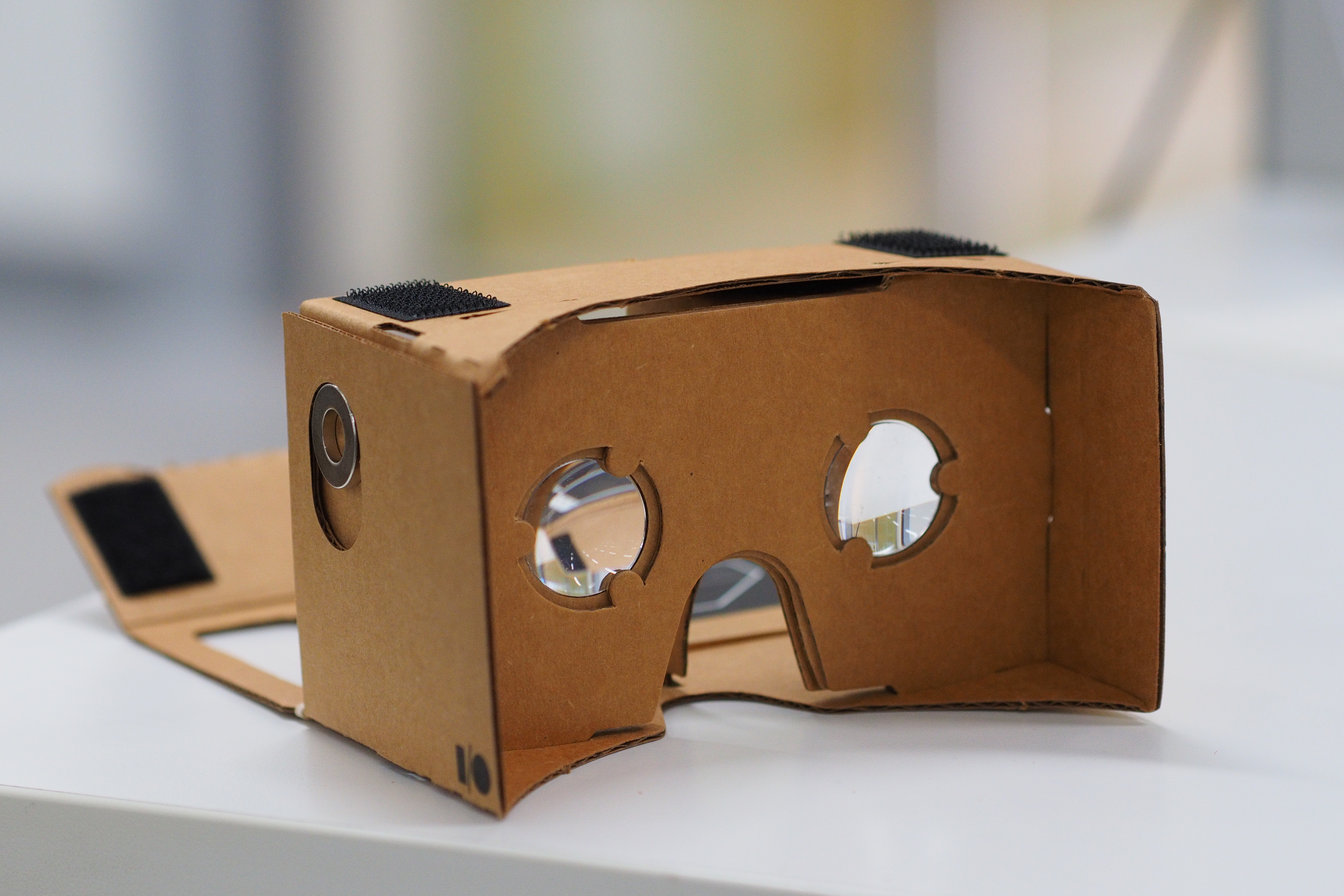VR was a major feature of CES this year, but with expensive entry costs for the high-end enthusiasts, MEF Minute Editor Sam Hill sees a potentially huge opportunity for mobile…
At CES this year, mobile was everywhere and nowhere. For every connected device there was an essential app – for every wearable device, there was the phone lurking in the background.
The mobile has become so ubiquitous in the way we interact with new and exciting technologies, it has become an integral, but almost incidental, platform – an essential portal into the digital world, so essential its become all but invisible.
The rare exception where the phone was the tech, was virtual reality.

Could the mobile VR become the stop gap to the “true” VR experience of the dedicated systems? With such a prohibitive price point, and with what would always (initially at least) be a niche market due to the high processing demands of full fat VR, could the mobile sneak in as the gateway to VR until such time as we can afford the “real” thing?
VR was everywhere at the show and the word was, this was to be its year. The big boys were all on display in more advanced forms than have ever been seen previously, being Facebook’s Oculus Rift, HTC’s Vive and Sony’s Playstation VR. These powerhouses are all dedicated VR machines coupled to your home computer (or your Playstation 4 in Sony’s case) capable of photo realistic graphics delivered to your eyes at high framerates on top quality dual screens to immerse you in a flawlessly realised virtual world.
The early breaking story at CES was the Rift’s price revelation – weighing in at $699, and confounded many expectations as to the system’s affordability (particularly as it had been previously mooted to come in around the $350 mark) all of which is before taking into consideration the cost of the monster PC you need to run it.
While the main competitor, HTC’s Vive, still has yet to announce pricing, it is not inconceivable that they may go for a similar high price point. Sony meanwhile remains another unknown factor, but again it is conceivable that the hardware may cost as much as the PlayStation itself.

Trying out the Samsung Gear VR on the showfloor at CES
Where does this leave mobile? Potentially, rather well off.
The smartphone is very much along for the virtual ride – some might even argue, its leading the way.
Mobile VR is delivered via the screen of the device itself while slotted into a goggle-like receptacle with dual lenses that align the images to present them to your brain as a 3d image. Combined with the sophisticated sensors and accelerometers that feature as standard on modern smartphones, you now find yourself with a competent headset that can provide a more than passable VR experience. Plus unlike their big brother systems, these mobile devices are just that – mobile – with no bulky cables attached to your head weighing down your experience.
The Samsung Gear VR is the most well developed such shell (designed in conjunction with Oculus) and there was a multitude of Google Cardboard style shells that accommodate android handsets and iphones alike.
The Gear costs just $95 and other shells, significantly less (the basic Google Cardboard will set you back just $10 – it is actually made of cardboard after all.)
For this minimal outlay and the time it takes to download a compatible app – consumers get a truly worthy VR experience at a fraction of the cost.
In this way could the mobile VR become the stop gap to the “true” VR experience of the dedicated systems? With such a prohibitive price point, and with what would always (initially at least) be a niche market due to the high processing demands of full fat VR, could the mobile sneak in as the gateway to VR until such time as we can afford the “real” thing?

The simplistic looking Google Cardboard belies the impressive experience of using it
The opportunities for mobile are numerous. Mobile devices still struggle with rudimentary control systems – after all, the phone is attached to your face and out of reach – a few bluetooth console style controllers have emerged to assist in the user experience but there is certainly room for improvement.
And of course there are limitless opportunities for game and app developers – much of the current content including virtual documentaries and experiences are free and in support of big brands or advertising, and can provide some truly impressive experiences. One doesn’t have to try too hard to imagine a vibrant app ecosystem along the lines of the existing stores with free and paid for content both potentially providing sustainable business models for innovative app developers.
On the content creation side, 360 degree cameras were out in force on the showfloor and can provide a means to create virtual experiences for film and documentary makers – so there are equally lots of opportunities for the creative industries, not to mention, ahem, “other” forms of entertainment.
So currently, with skin in both games, Facebook looks to be acknowledging the potential of the mobile market – particularly in the short term – but if a stable mobile VR marketplace is established who’s to say that it could not happily coexist alongside a more expensive, enthusiast’s virtual reality platform in the long term? So could we one day enjoy our mobile VR experience on the bus home, and pick up where we left off when we get home on our dedicated VR system?
Content Editor
MEF Minute


The only real unknown of course, is whether or not consumers will be happy to strap these contraptions to their face in the first place – and the mobile looks poised to play a vital stepping stone to whatever the future may hold for VR.
Since CES, Google has appointed a “VR Czar”, and Apple, a leading VR Researcher, to lead the way on their efforts in this fledgling market.
Whatever does happen next, make no mistake, VR, in some form or another, is coming soon.
Watch this (virtual) space.





